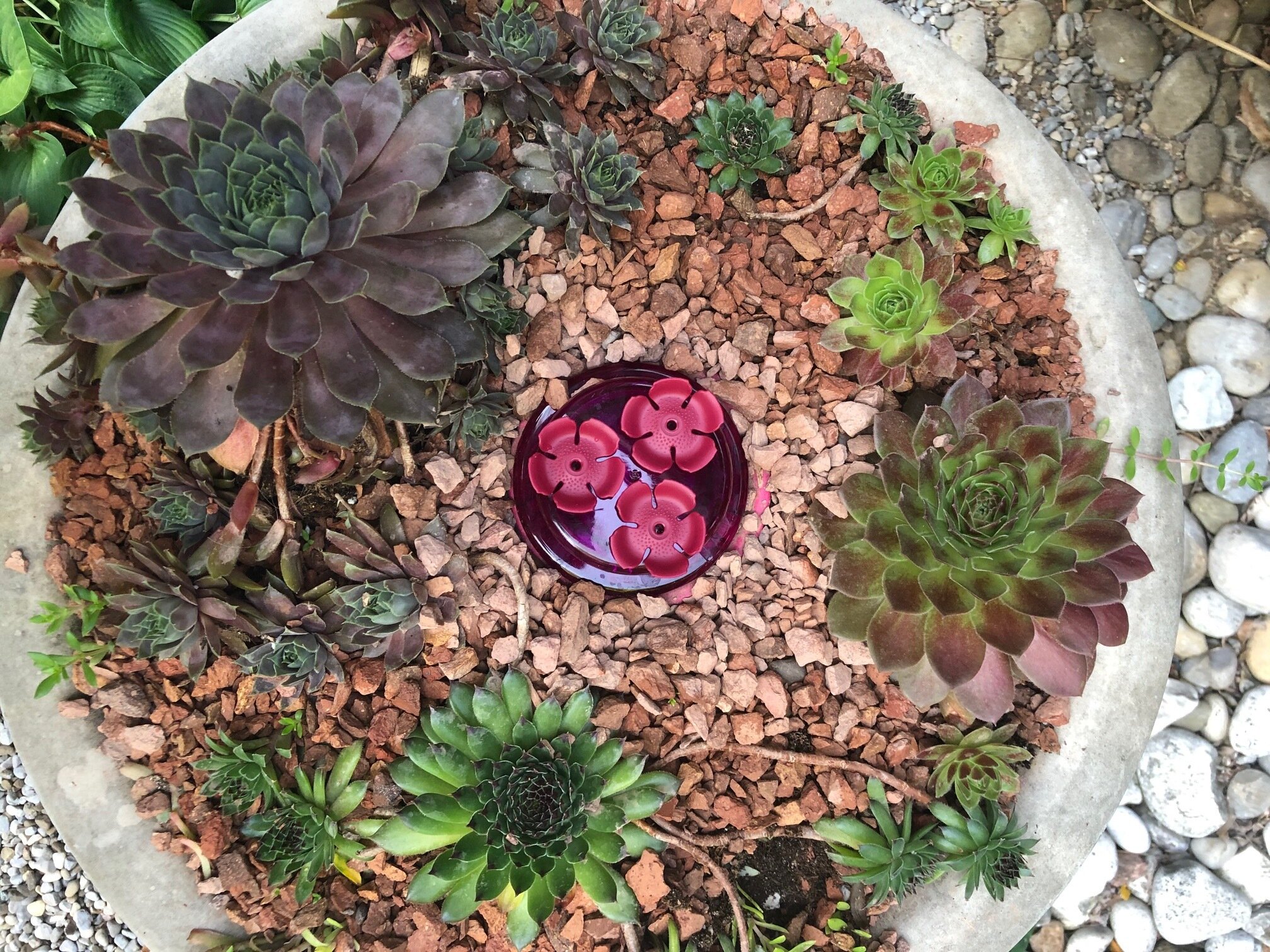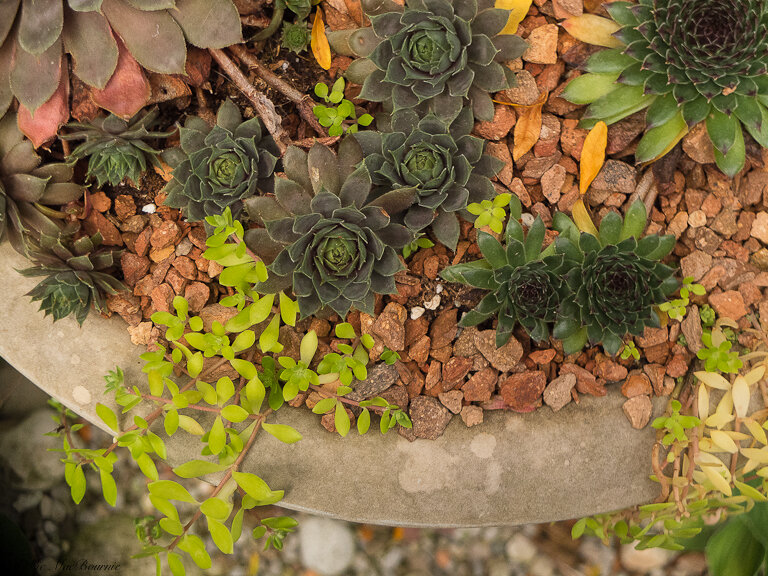DIY: Turn a birdbath into a succulent planter dish (step by step guide)
How to make a succulent dish garden (with a twist)
Here is a Do-it-yourself project that is both easy to create and results in a lovely succulent dish garden.
I’ve added a little twist by creating a mini photo studio with the addition of a small hummingbird feeder. All you need to complete the project is an old bird bath, some cactus soil, crushed clay stone and a small hummingbird feeder.
The project can be completed in less than an hour and will surely brighten up your backyard and add a great spot to photograph hummingbirds coming to your garden.
Succulents have certainly become popular recently. Here I have used a series of hens and chicks to make the project more hardy to stand up to our cold winters.
The popularity of succulents, however, is for good reason. Today’s succulents are outstanding. Large, small, colourful, tiny, easy to grow and even easier to maintain.
After all, the plants really don’t need a lot of care. Plant them in gritty, well-draining soil mixed with a little stone or pea gravel. Water them in extreme drought if necessary otherwise, just let them take care of themselves.
So with all this in mind, and with an old leaky bird bath sitting empty in the yard, I figured it was a good time to create one of these popular planters.
We’ve had the planter for several years and, besides replacing some of the succulents last year after a brutally cold winter, it has become a focal point along our pathway. I can’t say that it has attracted many hummingbirds over its time, but I’ll keep experimenting with different hummingbird feeders to find one that keeps them coming back.
This small round hummingbird feeder fits the succulent dish perfectly.
I happened to have the small hummingbird feeder designed to teach the tiny birds to eat out of your hand.
Converting birdbath into succulent planter
The project was simple and involved just a few items that I had around the house, and an electric drill.
1) First, I drilled about five holes through the bottom of the fibreglass bird bath to allow good drainage.
2) Then, add pea gravel in the middle area where the hummingbird feeder sits.
3) Next, surround the pea gravel with store-bought cactus soil and mix it with pea gravel to keep it loose and well draining.
4) Now it’s time to plant the succulents around the edges of the bird bath, mixing large and small.
5) I added some sedum that was already growing in the garden
6) I also had a curved wire that looked perfect as a hummingbird resting stop, so that was placed in the container but far enough from the feeder not to interfere with any hummingbirds that might be feeding while in flight.
7) I filled the little hummingbird feeder and placed it in the middle of the succulent container.
8) Finally, red chipped clay stone was placed over the soil as a mulch and a nice clean backdrop for the succulents. The stones help to keep water from splashing up dirt onto the succulents and gives the whole container a more desert feel.
How to care for a succulent dish (birdbath) garden
Caring for a succulent dish – in this case a birdbath – is simple. Succulents do not need a lot of water. In fact, too much water would be the main reason for their demise.
Think desert landscape and you’ll know how much you’ll need to water your dish. I rarely water our succulent dish. Instead, allowing our summer rains to get the job done with the occasional watering works well.
Providing good drainage is probably the most important step you could do to ensure the survival of the plants.
Ours is planted is an area close to the house that gets mostly morning sun into early afternoon.
For more on gardening on a budget, check out my in-depth article here.
Gardening on a budget links
Ten money-saving tips for the weekend gardener
DIY Bark Butter feeder for Woodpeckers
DIY reflection pond for photography
Click & Grow is ideal for Native Plants from seed
Remove your turf and save money
Hiring students to get your garden in shape
If you are interested in backyard birds, please consider signing up for my backyard birds newsletter. The sign-up page is at the bottom of my homepage. Not only will the newsletter provide in-depth articles on attracting, feeding and photographing backyard birds, I am also working with local artisans to provide discounts on incredible bird-related feeders, houses and other goodies backyard birders will love. In addition there will be regular giveaways , including gardening books and birding items.
This page contains affiliate links. If you purchase a product through one of them, I will receive a commission (at no additional cost to you) I try to only endorse products I have either used, have complete confidence in, or have experience with the manufacturer.




